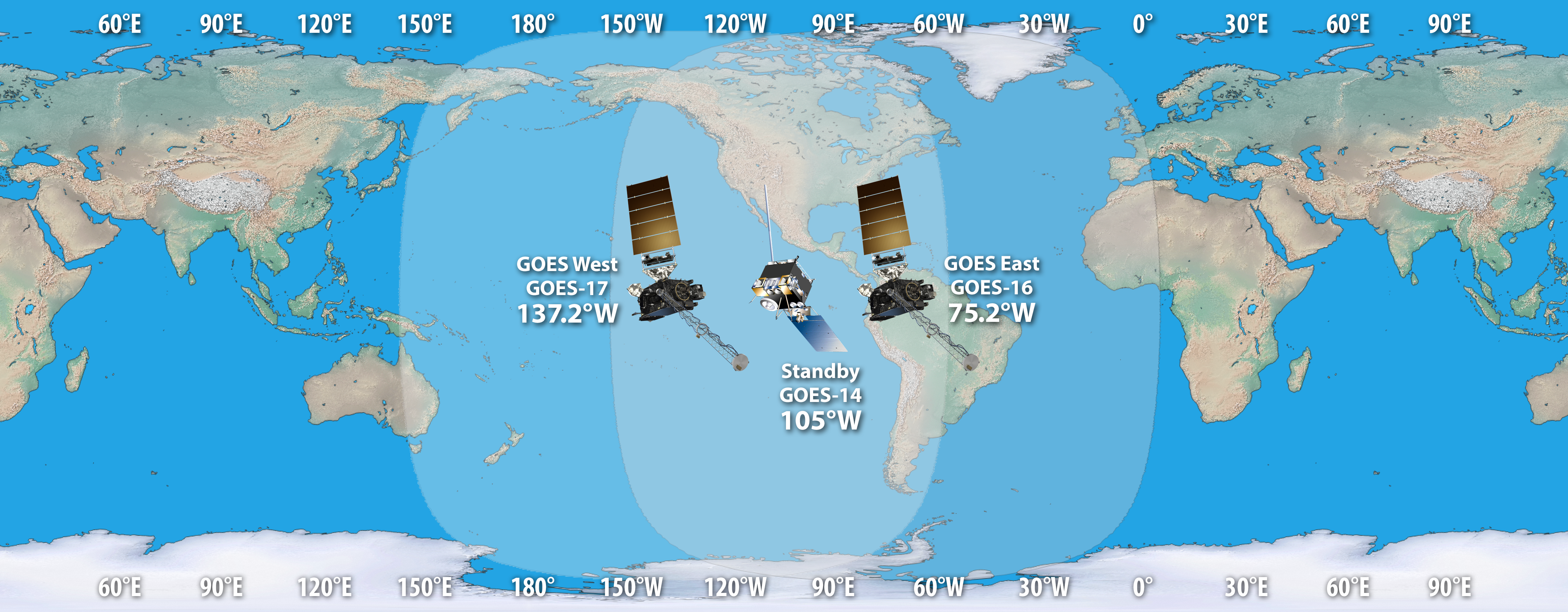GOES-16 moved to 75.2 degrees west longitude and became NOAA’s operational GOES East satellite on December 18, 2017, replacing GOES-13. From its operational location, GOES-16 is keeping watch over most of North America, including the continental United States and Mexico, as well as Central and South America, the Caribbean, and the Atlantic Ocean to the west coast of Africa. View details of GOES-16’s transition to operations.
GOES-17 moved to 137.2 degrees west longitude and became NOAA’s operational GOES West satellite on February 12, 2019, replacing GOES-15. From its operational location, GOES-17 is in position to watch over the western continental United States, Alaska, Hawaii, and the Pacific Ocean all the way to New Zealand. View details of GOES-17’s transition to operations.
For information on how the GOES-R Series system operates, see the Concept of Operations (CONOPS) document.
The original default observation mode for the GOES-16 Advanced Baseline Imager was a full disk scan every 15 minutes, a CONUS every 5 minutes, and two mesoscale every 60 seconds (or one sub-region every 30 seconds). On April 2, 2019, the GOES-16 and GOES-17 Advanced Baseline Imagers began operating in a new scan mode, 10-minute flex mode. Ten-minute flex mode is very similar to the previous default flex mode with one exception: a full disk image is generated every 10 minutes instead of every 15 minutes. Contiguous U.S. (CONUS) for GOES-16/ Pacific U.S. (PACUS) for GOES-17 scans (3000 km by 50000 km) are still provided every five minutes, in addition to two mesoscale domains (1000 km by 1000 km) every 60 seconds (or one domain every 30 seconds if scanning the same domain). The new scan mode allows NOAA to match the full-disk scanning cadence of our international partners and will be critical to National Weather Service Weather Forecast Offices, National Centers, and the Volcanic Ash Advisory Centers in monitoring hazardous weather conditions and providing additional information in observationally limited areas. Additional modes of operation for the ABI can be found at http://www.goes-r.gov/spacesegment/abi.html.


